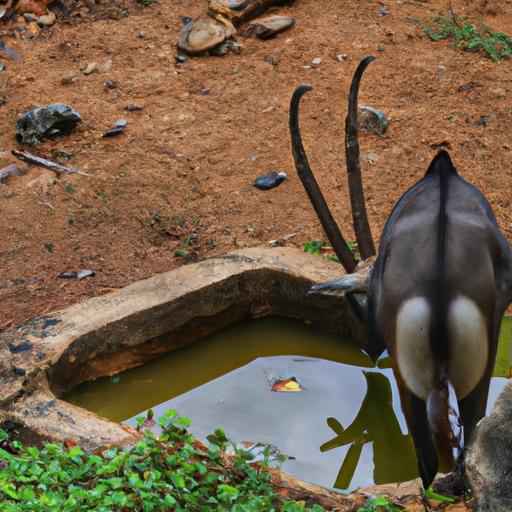 Introduction:
Introduction:
As the scorching heat of summer takes hold, humans seek refuge in air-conditioned spaces and cooling devices. But what about animals? They, too, face the challenge of surviving under extreme temperatures. Remarkably, the animal kingdom boasts an array of adaptations and strategies that enable them to beat the heat and thrive in various environments. From physiological adaptations to behavioral changes, animals have evolved to combat rising temperatures and maintain optimal body temperature. This comprehensive article delves into the fascinating world of animal thermoregulation and explores the diverse mechanisms these incredible creatures employ to beat the heat.
1. Physiological Adaptations:
1.1. Sweating and Panting:
Several mammals, such as humans, horses, and dogs, possess sweat glands that produce perspiration. By secreting moisture on their skin, these animals can cool down as the sweat evaporates, dissipating heat from their bodies. Similarly, panting helps regulate body temperature by allowing water evaporation from the moist surface of an animal’s respiratory tract.
1.2. Countercurrent Heat Exchange:
Animals inhabiting hot climates, such as camels and kangaroo rats, have developed an ingenious adaptation called countercurrent heat exchange. This mechanism involves a network of blood vessels near the skin’s surface that transfers heat from arterial blood to veins carrying cooler blood back to vital organs. This process effectively reduces body temperature, enabling these animals to withstand extreme heat.
1.3. Insulation:
Several species have evolved various forms of insulation to protect themselves from excessive heat. Thick fur acts as both insulation and a shield against the sun’s rays, keeping animals cool. Conversely, animals living in arid regions, like desert rodents, have developed sparse coats to prevent overheating.
2. Behavioral Strategies:
2.1. Seeking Shade:
Many animals instinctively seek shelter under trees, rocks, or other structures that provide shade during the hottest parts of the day. By avoiding direct sunlight, they reduce their exposure to intense heat, minimizing the risk of dehydration and overheating.
2.2. Burrowing:
Burrowing animals, like rabbits and meerkats, escape the heat by retreating underground. Burrows offer cooler temperatures and protection from the sun’s rays, creating a microclimate that prevents overheating.
2.3. Nocturnal Activity:
Numerous animals, such as bats and owls, have adapted to become nocturnal, primarily active during the cooler nighttime hours. This behavioral adaptation allows them to avoid the sun’s scorching rays and exploit cooler temperatures for hunting, foraging, and other essential activities.
2.4. Estivation:
In regions with prolonged drought and high temperatures, certain animals enter a state of dormancy known as estivation. This adaptive response enables them to conserve energy and avoid the harsh conditions until more favorable circumstances arise. Examples of estivating animals include desert tortoises, African lungfish, and certain amphibians.
3. Water Conservation:
3.1. Concentrated Urine:
Animals living in arid environments, such as kangaroo rats and desert-dwelling reptiles, have developed the ability to produce highly concentrated urine. This adaptation reduces water loss, as minimal water is excreted during urine formation, allowing them to conserve precious fluids.
3.2. Efficient Metabolism:
Some desert-dwelling animals have evolved incredibly efficient metabolic systems that minimize water loss. By utilizing metabolic pathways that produce minimal waste, these creatures can survive on limited water intake.
Conclusion:
The animal kingdom’s ability to adapt to extreme heat is nothing short of remarkable. Through a combination of physiological adaptations and behavioral strategies, animals have conquered challenging climates and found ways to beat the heat. Whether it is by sweating, panting, seeking shade, burrowing, or conserving water, these incredible creatures have evolved to thrive in environments where temperatures soar. Understanding these adaptations not only sheds light on the marvels of nature but also provides valuable insights for human efforts to combat the effects of climate change and ensure the survival of all living beings in a warming world.
